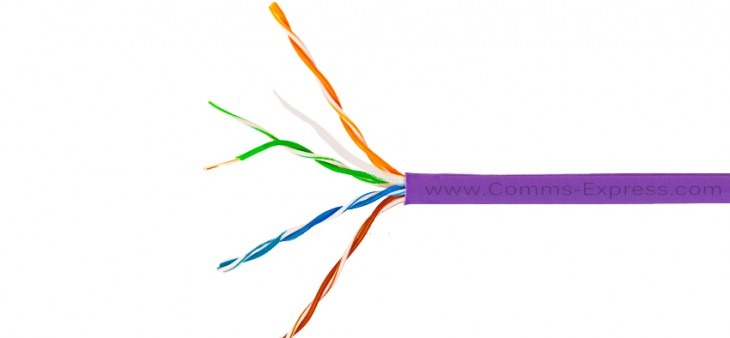
Standards for cable distance recommend that Cat5, Cat5e, Cat6 and Cat6a cables have a maximum cable segment run length of 100 meters or 328 feet. The cable distance specifications are part of the Telecommunications Industry Association (TIA) and Electronic Industries Alliance (EIA) standards. When recommended cable distances are exceeded, then signal loss may occur. If segment runs must exceed twisted-pair cabling specifications, a repeater or switch could be added. Solid cable, such as Cat5e solid core cable, is normally used for covering longer network cable distances. To construct these cables, four pairs of twisted wires are used which are either shielded or unshielded, depending on the level of protection needed. The most common cable type is unshielded, which is commonly referred to as UTP.
Category 5e Cable Length Recommendations
The recommended Cat5e cable length is similar to the standards for other twisted-pair cables. Cable distance guidelines for Cat5e are associated with TIA/EIA-568-5-A documentation. The maximum for a Cat5e cable segment is 100m. Category 5 Enhanced cable supports up to 1000Mbps Gigabit Ethernet speeds as four wire pairs are utilized.
Maximum Cable Segment Distances for Cat6 or Cat6a Cable
In 10/100/1000BASE-T applications, the maximum cable distance of a Cat 6 cable is 100 metres. However, Category 6 cable segment distance drops to a maximum run length of 55 metres when used for 10GBASE-T. This cable length may be further reduced in hostile alien crosstalk environments. These limits are not an issue with Cat6a cable. Augmented Category 6 cable’s maximum cable distance specifications are the same as Cat5 and 5e. This means 10GBASE-T can be supported at a 100-metre cable run distance.

